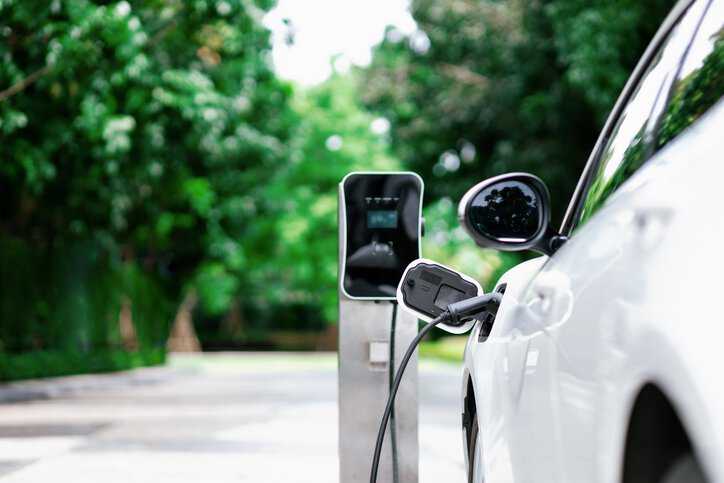Direct current (DC) chargers are bigger, faster, and overall, they are an technological breakthrough when it comes to electric vehicles (EVs). DC chargers are cost-effective and space-efficient; they allow for faster charging times and do not require extensive electrical infrastructure work. IEC 61851-23 Ed. 2.0 B: 2023— Electric Vehicle Conductive Charging System – Part 23: DC Electric Vehicle Supply Equipment covers specifications for DC EV supply equipment.
What Is EV Supply Equipment?
Electric vehicle supply equipment (EVSE) supplies electricity to an electric vehicle (EV). Commonly called charging stations or charging docks, the EVSE controls the transfer of electricity from the local power supply to the EV, allowing its batteries to safely and efficiently recharge. EVSE systems include the electrical conductors, related equipment, software, and communications protocols.
Classification of EVSE
Charging equipment for EVs is classified by the rate at which the batteries are charged. They are classified as Level 1 (120 volts AC), Level 2 (240 volts, AC), and DC Fast Charger (480 volts DC and higher). Level 1 and Level 2 chargers deliver alternating current (AC) electricity to plug-in electric vehicles (PEVs), which charge their batteries by converting AC to direct current (DC) electricity using their onboard equipment.
DC fast chargers convert AC to DC within the charging equipment before transmitting power to the PEV. This enables a faster charging process. Specifically, the charging time can range from less than 20 minutes using DC fast chargers to 20 hours or more using Level 1 chargers.
What Is IEC 61851-23?
IEC 61851-23 Ed. 2.0 B: 2023 applies to the EV supply equipment to provide energy transfer between the supply network and electric vehicles (EVs), with a rated maximum voltage at side A of up to 1,000 V AC or up to 1,500 V DC and a rated maximum voltage at side B up to 1,500 V DC.
The standard specifies the EV supply equipment of system A, system B, and system C. Other systems are under consideration.
IEC 61851-23 Ed. 2.0 B: 2023 provides the requirements for bidirectional power transfer (BPT) EV supply equipment for system A, with a rated maximum voltage at side A up to 1,000 V AC or 1,500 V DC.
The requirements for reverse power transfer (RPT) and BPT for system B and system C are under consideration and are not specified in this standard.
What Is the Difference between AC and DC Charging?
AC and DC are the two types of EV charging stations. Power from the grid, however, is always AC and EV batteries only accept DC power. Consequently, the current at some stage must be converted. The difference between AC and DC charging stations is whether that power convertor is located onboard or off-board the vehicle.
Unlike AC chargers, a DC charger has the converter inside the charger itself—meaning it can feed power directly to the car’s battery and does not need the onboard charger to convert it. In other words, AC delivers alternating current (AC) to an AC/DC converter onboard the vehicle. Whereas, the DC charging stations convert AC before it reaches the vehicle, instead of delivering direct current (DC) directly to the battery of an electric vehicle.
How Does DC Charging Work?
With DC charging, the convertor can be significantly larger since it is located off-board the vehicle. It is possible to deliver more power quicker because the current is already converted to DC by the time it reaches the vehicle. As a result, DC stations can provide up to 350 kW of power and fully charge an EV in 20 minutes (providing the EV allows it). Due to their fast-charging abilities, DC fast chargers are ideal for short-stop locations, fleet vehicle charging, and are beneficial for passenger vehicles as well as buses and trucks.
IEC 61851-23 Ed. 2.0 B: 2023— Electric Vehicle Conductive Charging System – Part 23: DC Electric Vehicle Supply Equipment is available on the ANSI Webstore.
